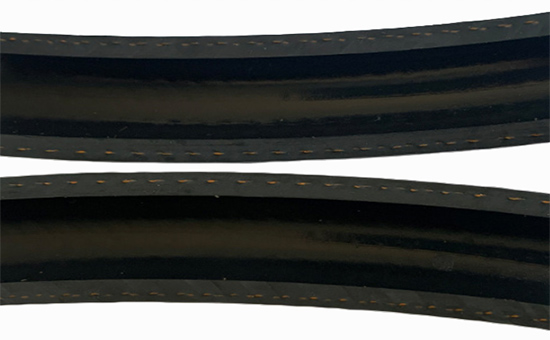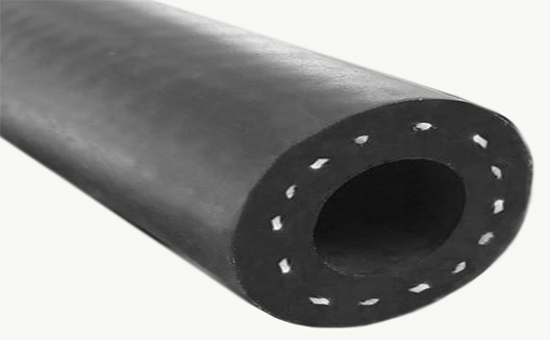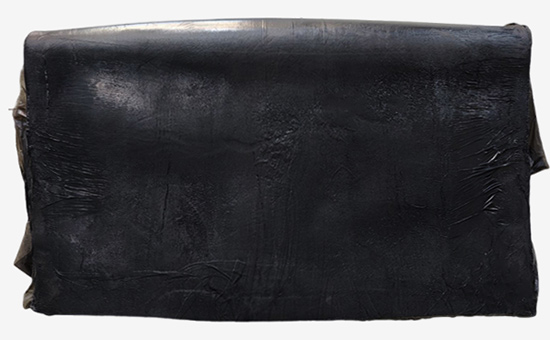Oil-resistant hoses are generally composed of an inner layer of glue, an outer layer of rubber and a cloth rubber, and are generally processed from rubber with excellent oil resistance. Neoprene rubber is made of chloroprene as the main raw material for α-polymerization, oil resistance is second only to nitrile rubber, heat resistance, ozone resistance, acid and alkali resistance is good, can be used with nitrile rubber to produce oil-resistant rubber hose each rubber layer, appropriate amount of reclaimed rubber, can effectively reduce the cost of raw materials under the premise of ensuring the performance of oil-resistant hose.
1. Neoprene/nitrile rubber/reclaimed rubber is used to produce the inner layer of oil-resistant hose vulcanization formula
50 parts of neoprene, 30 parts of nitrile rubber, 20 parts of reclaimed rubber, 3.5 parts of zinc oxide, 2.5 parts of magnesium oxide, 1.6 parts of stearic acid, 1 part of antioxidant A, 1.2 parts of antioxidant D, 1 part of paraffin, 35 parts of carbon black N330, 60 parts of light calcium carbonate, 9.5 parts of dibutyl phthalate, 4.8 parts of heavy oil, 6.7 parts of asphalt, 6.7 parts of coumarone resin, 2 parts of accelerator DM; Total 235.5 copies.

2. Neoprene/nitrile rubber/reclaimed rubber is used to produce the outer rubber vulcanization formula of oil-resistant hose
65 parts of neoprene, 15 parts of nitrile rubber, 20 parts of reclaimed rubber, 3.8 parts of zinc oxide, 4.2 parts of magnesium oxide, 2.5 parts of stearic acid, 1.6 parts of antioxidant D, 25 parts of carbon black N330, 25 parts of carbon black N774, 23.5 parts of clay, 4.3 parts of dibutyl phthalate, 11 parts of coumaron resin, 10 parts of engine oil, 0.42 parts of accelerator D, 0.25 parts of accelerator TMTD, 0.43 parts of sulfur; Total 212 copies.
3. Neoprene/reclaimed rubber and vulcanization formula for the production of oil-resistant hose wiping cloth glue

80 parts of neoprene, 20 parts of reclaimed rubber, 4.3 parts of zinc oxide, 3.4 parts of magnesium oxide, 1.8 parts of stearic acid, 1.4 parts of antioxidant D, 26 parts of carbon black N330, 9 parts of mixed carbon black, 19 parts of light calcium carbonate, 8.9 parts of dibutyl phthalate, 13 parts of coumarone resin, 4.3 parts of engine oil, 0.9 parts of rosin, 0.88 parts of accelerator D, 0.88 parts of accelerator TMTD, 0.44 parts of sulfur; Total 194.2 copies.
4. What reclaimed rubber can be used to reduce the cost of neoprene production of ordinary oil-resistant hoses
Reclaimed rubber can be divided into tire reclaimed rubber, natural latex reclaimed rubber, nitrile reclaimed rubber, butyl reclaimed rubber, neoprene reclaimed rubber, EPDM reclaimed rubber, etc. When using reclaimed rubber to replace part of neoprene rubber E5LYY114 produce different rubber layers of ordinary oil-resistant hoses, it is necessary to select appropriate reclaimed rubber varieties according to the specific performance requirements of each part of the hose, and give priority to nitrile reclaimed rubber and neoprene reclaimed rubber with good oil resistance; If you want to further reduce the production cost of oil-resistant hoses, you can also use tire reclaimed rubber in moderation.

When appropriately mixing reclaimed rubber in the formula of each rubber layer of neoprene rubber hose to reduce costs, it is not only necessary to select the appropriate reclaimed rubber variety, but also to reasonably design the rubber formula, including the proportion of reclaimed rubber blending, vulcanization system, reinforcement system, softening system, anti-aging system, etc.; Properly adjust the production process parameters, especially the mixing process and vulcanization process, Xiaobian will continue to discuss relevant issues with you.
Exclusive original article [commercial authorization] reprint, excerpt and excerpt in any form are prohibited without written authorization. Focus on Hongyun rubber: learn the process formula and raw material technology of producing rubber products from recycled rubber to help you reduce costs and increase profits